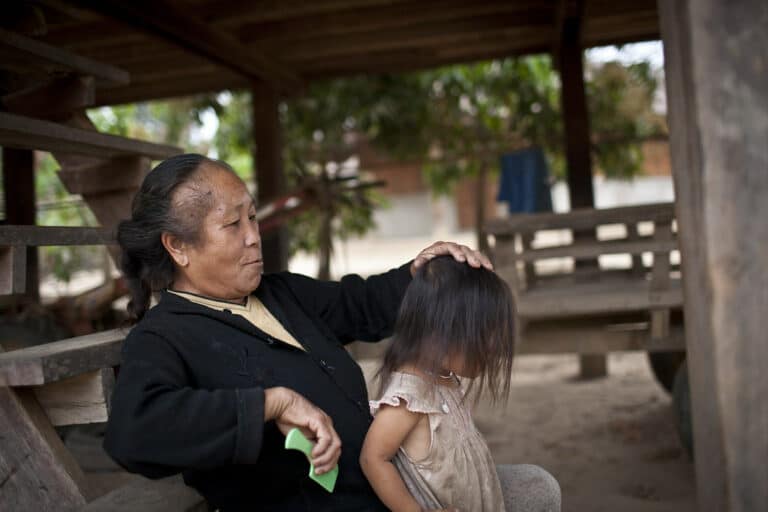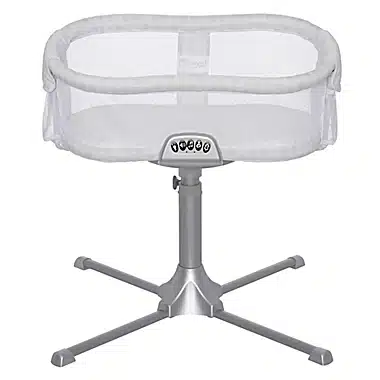How to Keep a Pacifier in Your Baby’s Mouth: Effective Strategies for Parents
Pacifier Falling Out: As a parent, you probably know that pacifiers play a crucial role in soothing young infants, resulting in a better night’s sleep for you and them. Besides, the American Academy of Pediatrics (AAP) reports that using a pacifier at night can help decrease the risk of SIDS, as it keeps babies in a lighter night sleep phase.
The trickiest part about pacifier use is keeping it in your baby’s mouth without falling out. You are not alone if you’ve been wondering how to keep a pacifier in your baby’s mouth. This article discusses the various ways you can mitigate to keep your child’s pacifier from falling out.

How To Keep A Pacifier From Falling Out
There are several reasons why your baby continues to spit out their pacifiers. Some of them include:
Use The Right Nipple Shape
The first thing to consider when working out why your baby’s pacifier falls out is its shape. Pacifiers come in different shapes and styles. Some are simple, while others are more elaborate. Your baby should guide you on their pacifier preference. You’ll need to try different pacifiers in the long run until you find the best one for your baby.
Your baby may prefer the rounded tip nipple. This is one of the market’s most common and affordable pacifier types. This type is great when you need to keep it on multiple hands when your little one spits the other.
If your child doesn’t fancy this shape, they may like the orthodontic nipple style instead. This pacifier is made to fit the shape of your baby’s mouth better. It also gives them much grip and helps improve their sucking reflex strength.
To help keep your baby’s pacifier in their mouth, you’ll have to try different shapes to establish the one they like best. Then it would be easy for them to keep the pacifier in their mouth.
Check The Nipple Texture
Like type, not all pacifiers are the same and come in different textures. Some pacifiers are more malleable and comfortable in your baby’s mouth than others. Other pacifiers’ materials respond better to warmth while others gently mold into your child’s mouth shape as when sucked.
If your baby is a strong sucker, pacifiers with a firmer nipple may work better. And even when they prefer pacifiers with a softer feel and textures, these are not recommended. That’s because they can easily cause a choking hazard, thanks to the baby’s strong sucking reflex.
In this case, finding a pacifier nipple with good firm pressure is better. This way, you’re avoiding the risk of choking hazards.
Use The Appropriate Nipple Size
Then there’s the issue of the nipple size, making the pacifier falls out of your baby’s mouth. Pacifiers come in many sizes, enabling them to grow with your baby. Your baby’s pacifier may fall out because it’s the wrong size.
Here, you’ll have to keep upgrading your child’s pacifier size as they grow to ensure they fit well in their mouths. This way, you’re avoiding too small or too large pacifiers.
Handle Nipple Confusion
Nipple confusion can be another reason why your baby’s pacifier falls out. This term describes a situation where a breastfed or bottle-fed infant is switched to the opposite. For instance, if you start breastfeeding your baby, and then switch to a bottle, your child will experience nipple confusion.
They may have difficulty latching on or refusing to latch on the new nipple. That’s because the breasts and the bottle’s nipple are different and feel so in your little one’s mouth. Remember, your baby uses different actions when nursing from a breast or a bottle. And they may spit out the pacifier if they’re used to breastfeeding as they feel it’s foreign in their mouths.
If your baby’s pacifier falls out because of nipple confusion, try to help them get used to the foreign texture in their mouths. Offer the pacifiers as often as possible to help them adapt to their texture and feel, but don’t force it on them. After a while, your baby will recognize the pacifier and get used to it.
Use Pacifier Cords
Another way of helping your kid’s pacifier from falling out is to use a pacifier cord. Pacifier cords work great if your baby is awake and you supervise them closely. Here, you can secure the pacifier on your child’s mouth with a cord, preventing it from being dropped or spitted out.
Remember, the pacifier cords should not be used at bedtime or naptime. Doing so can easily lead to strangulation hazards.
Attach Pacifier To A Stuffed Animal
You can attach your child’s pacifier to a stuffed animal, like pacifier cords. Plush pacifier holders are excellent options for ensuring your child’s pacifier is always with them. This works great, especially for older kids who can pick things well and place them in their mouths.
Attach the pacifier to the stuffed animal’s mouth where the animal’s leg provides stability, keeping the pacifier in your child’s mouth. This way, your little ones will always have their pacifier within reach, and the stuffed animal will act as a comfort object.
Attach Pacifier To A Soft Toy
Another effective method of ensuring your child’s pacifier stays in their mouth is to attach it to their favorite toy. This, too, works great for older infants. Pacifiers with a handle are best for this strategy. Attach a ribbon to the pacifier handle and attach it to the toy by tying a strong knot around the handle. Avoid large loops on the toy, as they are a suffocation hazard.
Encourage Better Sucking
If a pacifier easily falls out, it may be due to low muscle tone or poor suction. You can improve your child’s sucking strength by gently tugging on the pacifier as they enjoy it.
Don’t yank the whole pacifier out the mouth; give it a gentle tug to see how your child responds. The pacifier falling out of your child’s mouth can encourage them to suck it back in.

Conclusion
Keeping a pacifier from falling out can be challenging, especially for new moms who haven’t gotten the nook of motherhood. But the good thing is that several strategies help you with this.
Change the type, texture, and size if they are incompatible with your baby. You can also attach the pacifier to cords, stuffed animals, or toys and encourage better sucking.






